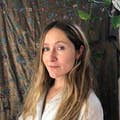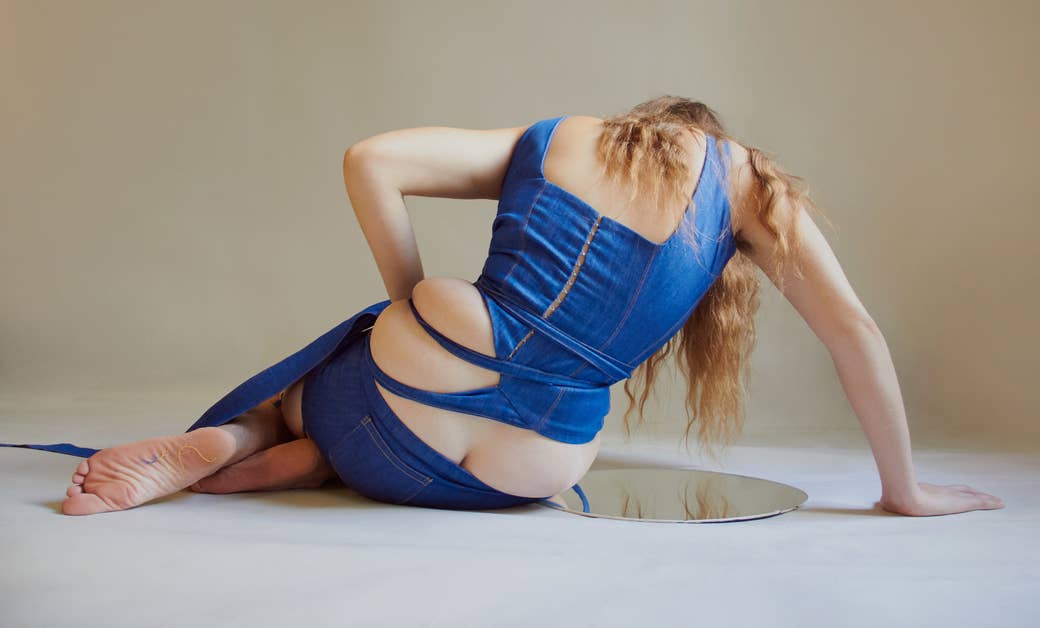
Michaela Stark, an Australian couturier and artist who moved to London during the pandemic, has accomplished career goals that some of us might only dream of — she worked as a tailor for Beyoncé, for example. A self-trained couturier who spent years studying fashion, she creates clothes that are meant to emphasize the parts of the body that we are made to be ashamed of. The fat rolls, the round stomachs, cellulite, body hair, uneven breasts — these are the parts of the body that, as women, we are often told are shameful or even ugly.
“I work very closely with the body to make clothes that accentuate and enhance these, using techniques that couturiers have used in the past. I use the same tools that were used to hide, to accentuate,” Stark said.
Her work can shock people — and that is part of the point. Her work intends to challenge beauty standards in Western culture, and to create beautiful work that takes part of the body that women might not love about themselves and make that sexy.
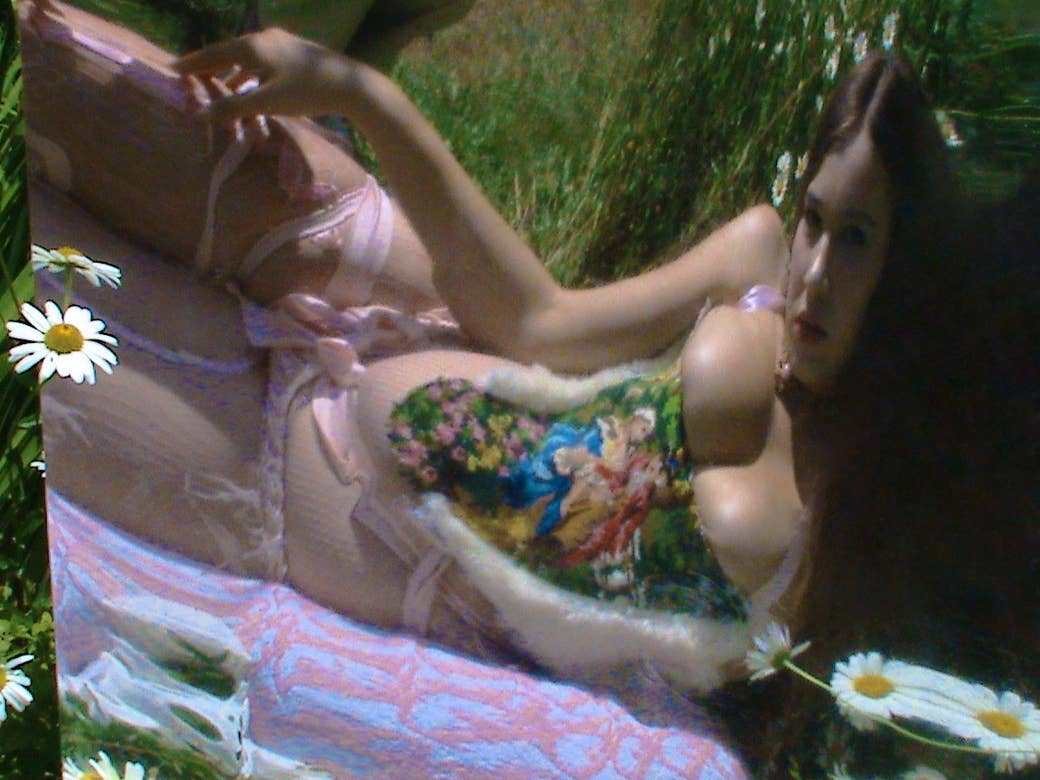
How would you describe your designs?
My designs are very intricate and fragile. I like to create garments that are so delicate in nature, created out of the finest silk or most invisible tulle, and hand-embroidered with equally as intricate and delicate detailing — like real-life flowers, pearls, or tiny individually sewn on Swarovski. I like my pieces to look like they are so fragile that they are almost decaying on the body.
I want to challenge your perception of your own body and allow you to see your perceived flaws as beautiful. I want you to see your body, flaws and all, as just as intricate, fragile, and delicate as the garments that I create.
Seeing your designs on your body, they’re very sexy and revealing — but not really for the male gaze.
I’m a woman, and I’m creating these clothes, and photographing myself as well, while I’m alone in my bedroom. It was very playful for myself. I never really expected to be releasing it into the world. The images became part of my artwork really really naturally, and so did the making it for the woman’s gaze. It’s really just me alone in a room, and I think it speaks to how other people also see themselves most of the time.
I can relate. I mean we’re so focused on our bodies in the pandemic — I cannot be the only woman who mail-ordered lingerie as a comfort only to have it not fit.
Buying anything online is hard! That shouldn’t be a thing, even if you’ve been correctly sized by a professional, don’t buy it online. You always need to try it on first! It’s meant to fit your body like a glove. It’s not an outer garment. It’s not meant to have lumps and bumps because it’s meant to look nice under clothing. Of course the lingerie that I create is a comment on that, how it often doesn’t fit people and how often there ARE lumps and bumps and how uncomfortable that can be as a woman who is just trying to go through her everyday life and then you have all these weird things happening on your body that you can’t control.
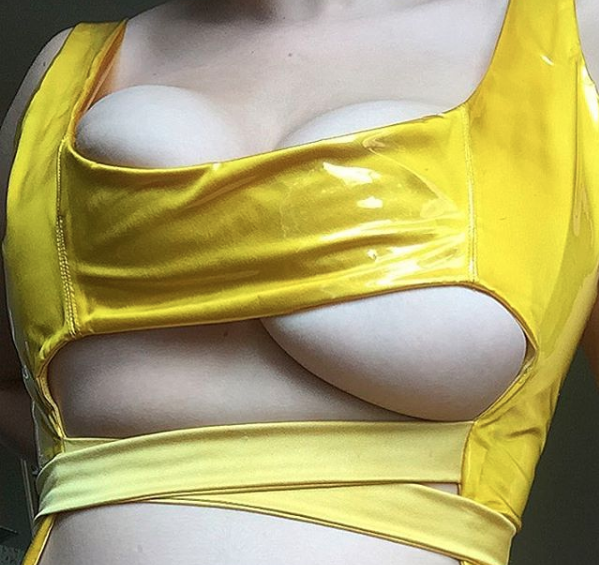
Yeah, I mean, creating this is your passion. What were your first experiences with lingerie?
I bought my first bra when I was 12. I remember that time really vividly because none of my friends had breasts yet. I went to an all-girls school, and people would really tease me about my boobs. I did not understand bra sizes. I didn’t know what to do! My friends all had these beautiful bras, unpadded, lacy, and so I bought the same ones in the same sizes and I had such an uncomfortable bump under my school uniform, and that created more problems. I found the whole experience quite daunting and quite scary. Every girl at that age has such different shapes, but there are also trends that are going on that you’re trying to fit into, and your body is changing. It’s such a difficult time.
When did your experience with clothes change to something that felt more comfortable and true to you?
If I'm being honest, I struggle with clothing and lingerie that doesn’t fit right even still now. It’s still something that I deal with every day, and it’s partly why I feel quite passionate about this message.
In quarantine, I’ve been wearing a lot of loungewear at home, and it’s made me realize that I feel very comfortable when I don’t have to wear lingerie or bras. I feel more free because at home if one boob slips out it doesn’t matter. On the bus, it does matter.
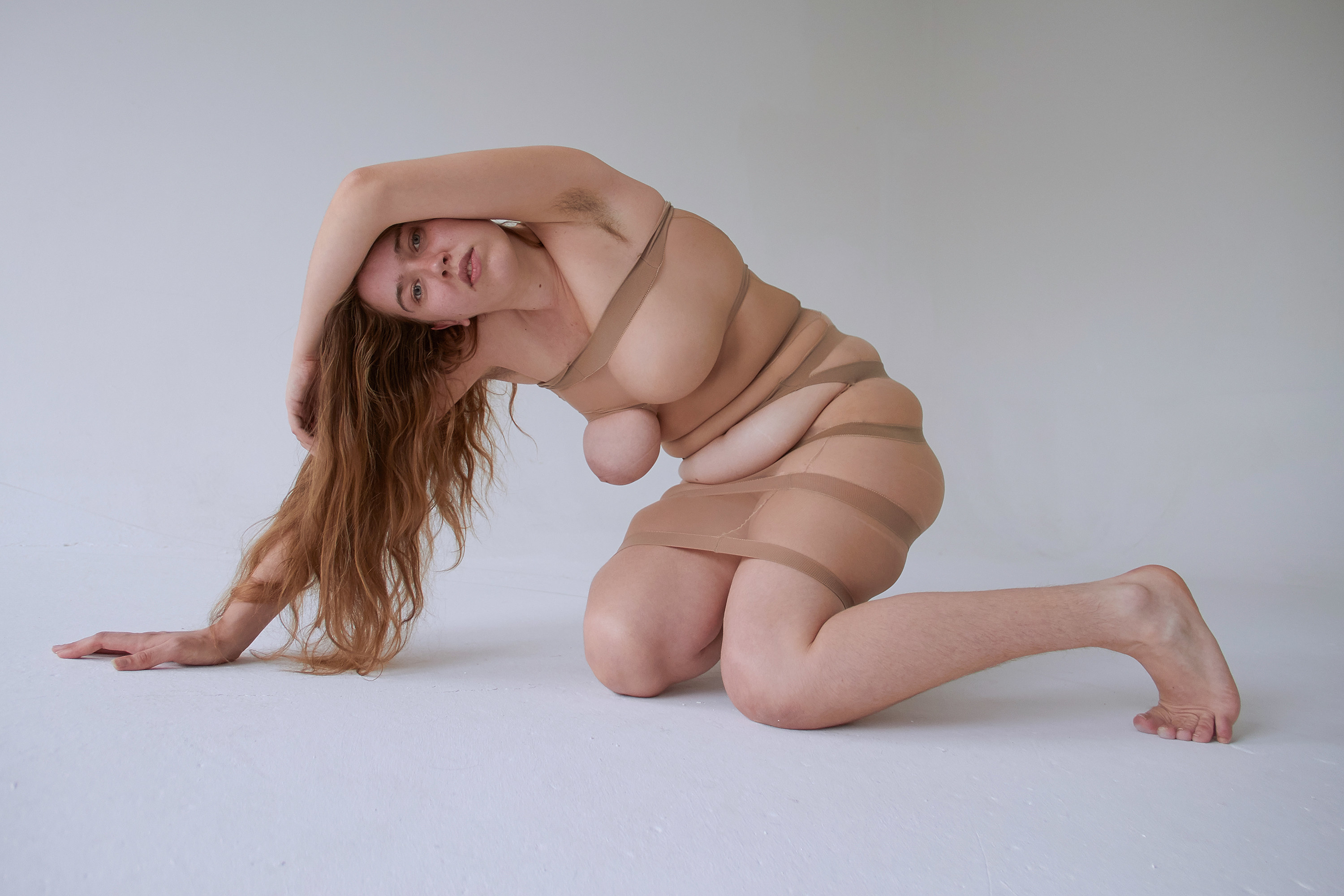
Do you consider yourself a designer or an artist, or in between?
Ahhhhh, this age-old debate. “Is it art, or is it fashion?” Haha. People honestly ask me this all the time.
I personally see myself as a couturier who likes to create art as an extension of my practice and as a way of further communicating my message.
I say this because my couture is the most fundamental part of my practice. Like, I have worked in fashion since I was 15. I used to take a day off every week at school to intern with local designers in Brisbane (on the pretense that I was keeping up with all of my other school work and grades). And I haven’t stopped since. Working in fashion, and creating beautiful clothing is my passion — and is the part of my practice that brings me the most joy. My self-portraits only actually arose as a way of me documenting my design process.
How did the self-portraiture aspect of your practice come about?
It really arose as a way of me documenting my design process. Over the years, though, it has kind of developed into something more. Now, I actually often refer to my self-portraits as inspiration for when I am designing new clothes. It has come full circle!
Your process is so personal. I've seen you sewing designs onto clothes as you're wearing them on Instagram. How do you design for other people?
I did start in the industry as a designer for other people. I was working for Beyoncé during the OTR II Tour and “Apeshit” music video as a personal tailor and costume designer. I have been in the industry for a while, so I have had the experience of working for other people. It took me three years of being able to experiment on myself to be able to work with other people in the same way I work with my own body. The work that I do is so personal. It’s so vulnerable. It’s really bringing out your flaws and perceived insecurities and turning it into a fantasy. It’s such a process to get to the final piece and the final image. Along the way, I’ve learned a lot and come to really understand how vulnerable that can be as a model. I’m ready to start working with other models, and give them the power and control over their bodies that I think that they deserve to have when they’re in front of a camera and unfortunately they often don’t have in fashion editorials. That’s a project that I’m throwing myself into 2021, a process of collaborating with models instead of just telling people what they're going to wear.
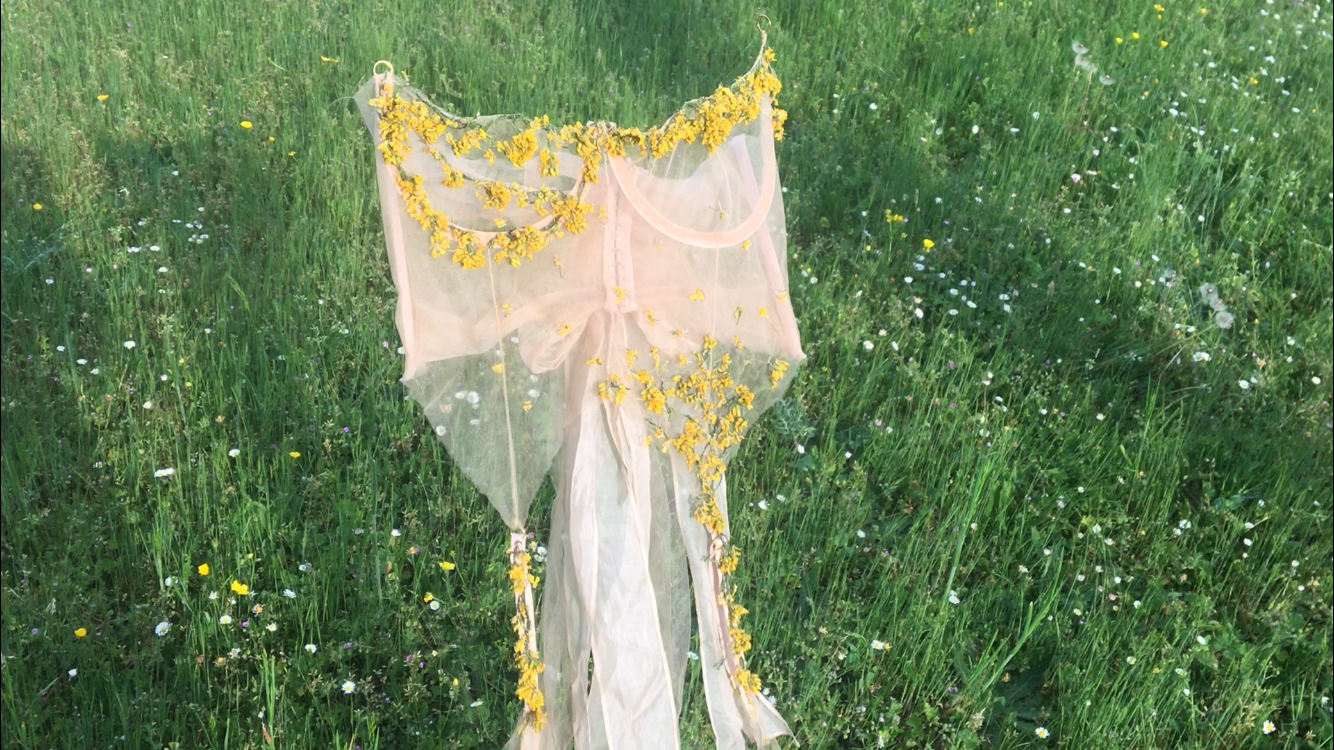
Do you want to see more of that in the industry going forward, not just in your work?
Absolutely. I have seen plus-size models have their bodies be taken advantage of in photoshoots time and time again. There are a lot of instances in the industry where people will work with a plus-size model on the pretense that they want to empower them, and then not allow that model any control over the images or how their body is represented. In the end, a very revealing photo could be released that the model is not happy with, and that absolutely does not make her feel empowered — and she has no say on the matter. Obviously that’s not everyone. A lot of people are trying to empower plus-size models, but there are also a lot of people who are just trying to use them as a trend. Changing this power dynamic on photoshoots is something I want to work toward — though it’s a big job! That really involves shuffling the industry around a lot.
Like many artists and photographers, it seems like you have a complicated relationship with Instagram. What do you think about how the app polices women's bodies?
I think that Instagram obviously has a history of policing women’s bodies. Nyome Nicholas-Williams is a plus-size model that has made huge progress in getting Instagram to change the nudity policy, in order to equalize the censorship between plus-size bodies and thinner bodies. Obviously when there’s more fat there’s more flesh, and so the algorithm is picking up on it. Instagram has also recently created new censorship rules that will completely ban sex workers from the app, which in turn marginalized an entire community. At the end of the day, the platform is just a business, and it’s not treating everyone equally, and it's sad that it has so much power. It's not fair to give one platform or one person so much power over art. It really affects everyone's livelihood. I’ll be in the middle of a shoot and think, Oh, Instagram isn’t going to allow this, and so I have to change the shoot. It’s censoring out artwork on a fundamental level. It’s not like we can share it elsewhere — an exhibition, maybe, but can we count on that with the pandemic?
The people on social media are actually what’s going to have more impact on your work than Instagram itself. What I find interesting is the backlash from people. There’s a lot of backlash when I do collaborations with people calling me out on things that aren’t even true. The interview will be all about female empowerment, the article will be quite well written, and then the photo will go on Instagram and people will disregard the entire article.
It’s wild how many people think that these photos were taken by a man. People saying that I’m a man. I shouldn’t be doing this to women as a man — that is wild. It takes something that’s really supposed to be about body positivity and social media, and it turns into something that’s more negative for the artist. It’s a huge issue I deal with as an artist. It’s why I make art — to deal with the backlash.

What are some of your goals for this work?
My next steps are to turn this into a more inclusive discussion, I want to include other women and/or men in the work. When I start including other people in the design process, and listen to their input and create based on their specific insecurities, and what makes them as individuals feel sexy and powerful, the conversation is just going to get wider.
I definitely want to push it forward by bringing in other people. I also want to push forward my couture, because that’s a fundamental part of my practice.
Do you have a favorite garment, either one made by you or by someone else?
Omg, this is literally such a hard question to answer. For some reason, the “Skeleton” dress by Schiaparelli (1938) was the first one that came to my mind or the McQueen “Blood” dress from his “Voss” collection (SS01).
But then that excludes so many iconic moments, like Rei Kawakubo’s “Lumps and Bumps” collection (SS97) or Galliano’s, like, entire reign at Dior. You’re making my mind spin — I can’t answer!
